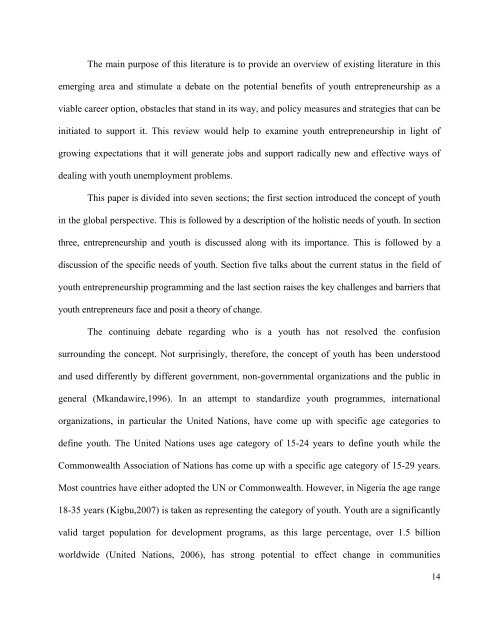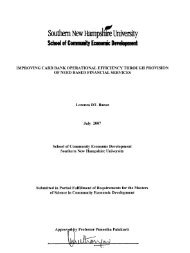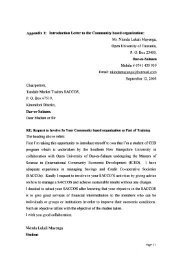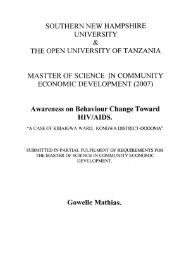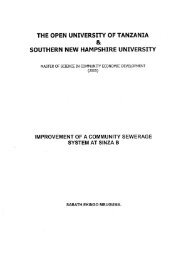Promoting youth entrepreneurship in Lagos, Nigeria - SNHU ...
Promoting youth entrepreneurship in Lagos, Nigeria - SNHU ...
Promoting youth entrepreneurship in Lagos, Nigeria - SNHU ...
Create successful ePaper yourself
Turn your PDF publications into a flip-book with our unique Google optimized e-Paper software.
The ma<strong>in</strong> purpose of this literature is to provide an overview of exist<strong>in</strong>g literature <strong>in</strong> thisemerg<strong>in</strong>g area and stimulate a debate on the potential benefits of <strong>youth</strong> <strong>entrepreneurship</strong> as aviable career option, obstacles that stand <strong>in</strong> its way, and policy measures and strategies that can be<strong>in</strong>itiated to support it. This review would help to exam<strong>in</strong>e <strong>youth</strong> <strong>entrepreneurship</strong> <strong>in</strong> light ofgrow<strong>in</strong>g expectations that it will generate jobs and support radically new and effective ways ofdeal<strong>in</strong>g with <strong>youth</strong> unemployment problems.This paper is divided <strong>in</strong>to seven sections; the first section <strong>in</strong>troduced the concept of <strong>youth</strong><strong>in</strong> the global perspective. This is followed by a description of the holistic needs of <strong>youth</strong>. In sectionthree, <strong>entrepreneurship</strong> and <strong>youth</strong> is discussed along with its importance. This is followed by adiscussion of the specific needs of <strong>youth</strong>. Section five talks about the current status <strong>in</strong> the field of<strong>youth</strong> <strong>entrepreneurship</strong> programm<strong>in</strong>g and the last section raises the key challenges and barriers that<strong>youth</strong> entrepreneurs face and posit a theory of change.The cont<strong>in</strong>u<strong>in</strong>g debate regard<strong>in</strong>g who is a <strong>youth</strong> has not resolved the confusionsurround<strong>in</strong>g the concept. Not surpris<strong>in</strong>gly, therefore, the concept of <strong>youth</strong> has been understoodand used differently by different government, non-governmental organizations and the public <strong>in</strong>general (Mkandawire,1996). In an attempt to standardize <strong>youth</strong> programmes, <strong>in</strong>ternationalorganizations, <strong>in</strong> particular the United Nations, have come up with specific age categories todef<strong>in</strong>e <strong>youth</strong>. The United Nations uses age category of 15-24 years to def<strong>in</strong>e <strong>youth</strong> while theCommonwealth Association of Nations has come up with a specific age category of 15-29 years.Most countries have either adopted the UN or Commonwealth. However, <strong>in</strong> <strong>Nigeria</strong> the age range18-35 years (Kigbu,2007) is taken as represent<strong>in</strong>g the category of <strong>youth</strong>. Youth are a significantlyvalid target population for development programs, as this large percentage, over 1.5 billionworldwide (United Nations, 2006), has strong potential to effect change <strong>in</strong> communities14


